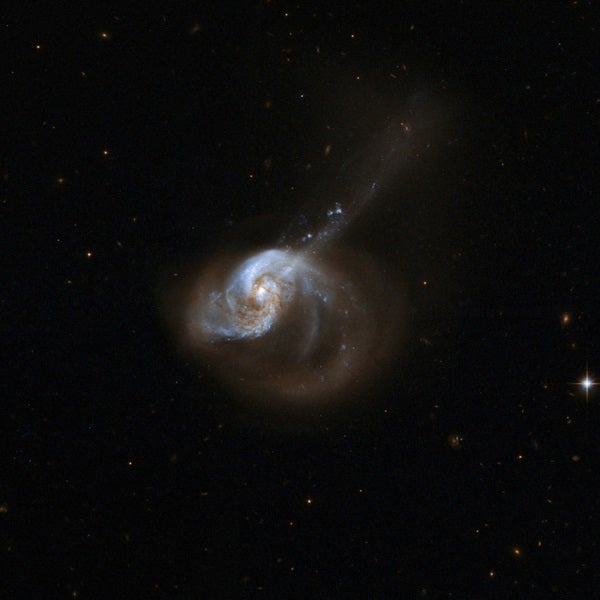Scientists at the Naval Research Laboratory (NRL) have solved a long-standing dilemma about the mass of infrared bright merging galaxies. Barry Rothberg and Jacqueline Fischer used new data from the 8-meter Gemini-South telescope in Chile along with earlier results from the W. M. Keck-2 10-meter and University of Hawaii 2.2-meter telescopes and archival data from the Hubble Space Telescope to solve the problem.
Galaxies in the universe generally come in two shapes — spiral, like our own Milky Way, and elliptical, in which the stars move in random orbits. The largest galaxies in the universe are elliptical in shape, and how they formed is central to our understanding of how the universe has evolved over the past 15 billion years. The long-standing theory has been that spiral galaxies merge with each other, forming most of the elliptical galaxies in the universe. Spiral galaxies contain significant amounts of cold hydrogen gas. When they merge, the beautiful spiral patterns are destroyed, and the gas is converted into new stars and large amounts of dust. The dust is heated by the young stars and radiates energy at infrared wavelengths.
Until recently, scientists thought these infrared bright merging galaxies were not massive enough to be the precursors of most elliptical galaxies in the universe. The conventional method of measuring mass in dusty IR-bright galaxies uses near-infrared light, which can penetrate dust, to measure the random motions of old stars. The larger the random motions, the more mass is present. When spirals merge, gas from both galaxies forms a central rotating disk that then forms new stars. These young stars outshine the old stars at near-infrared wavelengths, making it appear as if the old stars have less random motion. Rothberg and Fischer instead observed the random motions of old stars at shorter wavelengths, effectively using the dust to block the light from the young stars. Their new results showed that the old stars in merging galaxies have large random motions, which means they will eventually become very massive elliptical galaxies.










